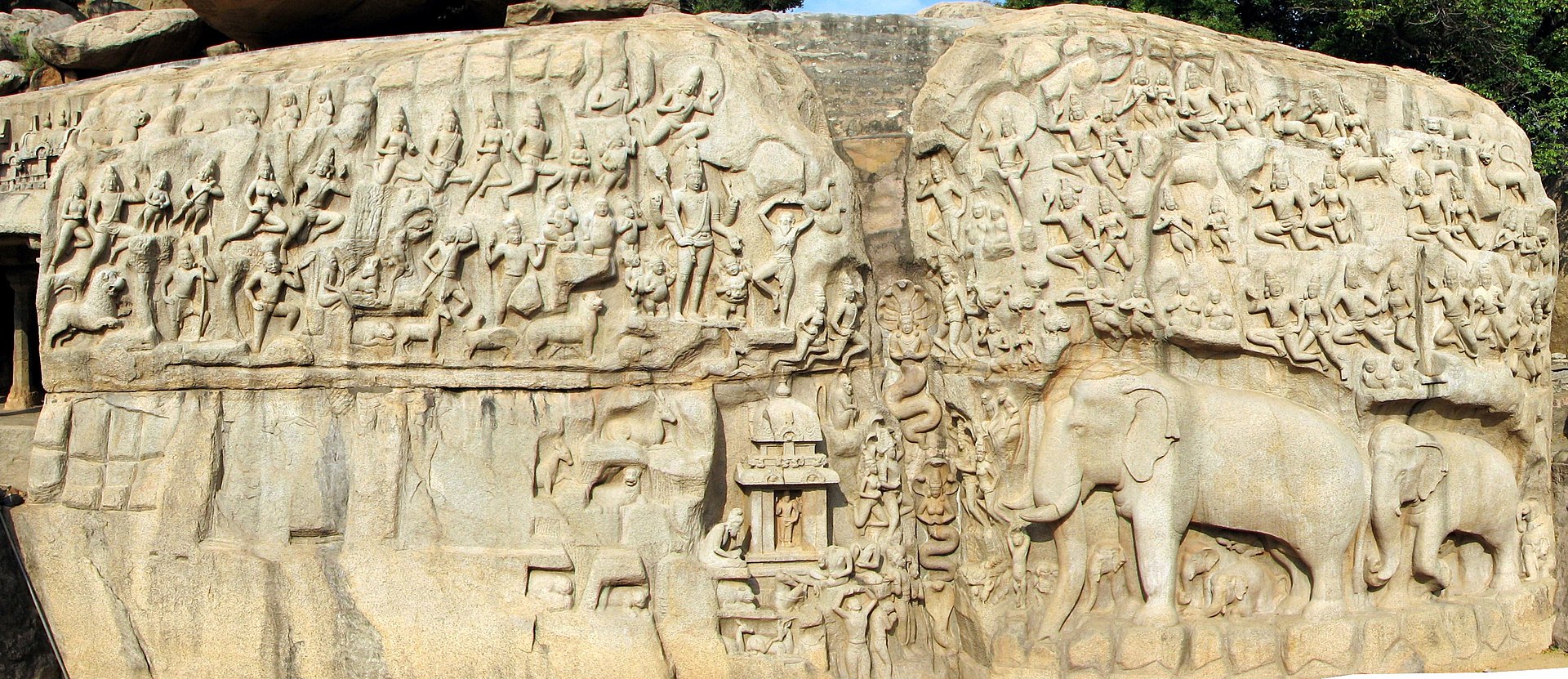The “Descent of the Ganges,” also known as “Arjuna’s Penance,” is a magnificent rock relief sculpture located in Mahabalipuram, a UNESCO World Heritage Site in Tamil Nadu, India. Carved into the face of a massive granite rock formation, this iconic sculpture depicts a mythological scene from Hindu mythology and serves as a testament to the artistic and architectural prowess of ancient India.
The Descent of the Ganges sculpture is believed to have been created during the reign of the Pallava dynasty, which ruled the region from the 4th to the 9th century CE. It is one of the most famous and largest rock-cut sculptures in Mahabalipuram, measuring approximately 29 meters (95 feet) in length and 16 meters (52 feet) in height.
The sculpture portrays the story of Arjuna, one of the Pandava brothers from the Hindu epic Mahabharata, performing severe penance to obtain the powerful weapon known as the Pashupatastra from Lord Shiva. According to Hindu mythology, Arjuna’s penance was undertaken to defeat the Kauravas in the epic battle of Kurukshetra.
The central motif of the sculpture depicts Lord Shiva, also known as Maheshwara, standing with his consort Parvati (also known as Uma) atop Mount Kailash, the abode of Lord Shiva. Shiva is shown with his right foot placed on a small demon, symbolizing the triumph of good over evil. The figures of various celestial beings, gods, demigods, animals, and mythical creatures adorn the scene, creating a vibrant and dynamic composition.
The most striking feature of the Descent of the Ganges sculpture is its intricate detailing and lifelike portrayal of figures, carved with remarkable precision and skill. The rock relief is a masterpiece of Pallava artistry, showcasing the ingenuity and creativity of ancient Indian sculptors.
In addition to its artistic and cultural significance, the Descent of the Ganges sculpture holds religious importance for Hindus and serves as a pilgrimage site. It is believed that the waters of the sacred Ganges River flow through the hair of Lord Shiva in the sculpture, symbolizing the descent of the divine river to earth to purify mankind.
The Descent of the Ganges sculpture is surrounded by lush greenery and a tranquil atmosphere, providing visitors with a serene and contemplative setting to admire its beauty and significance. It continues to attract tourists, scholars, and devotees from around the world, who come to marvel at its grandeur and ponder the rich mythology and symbolism depicted in stone.

